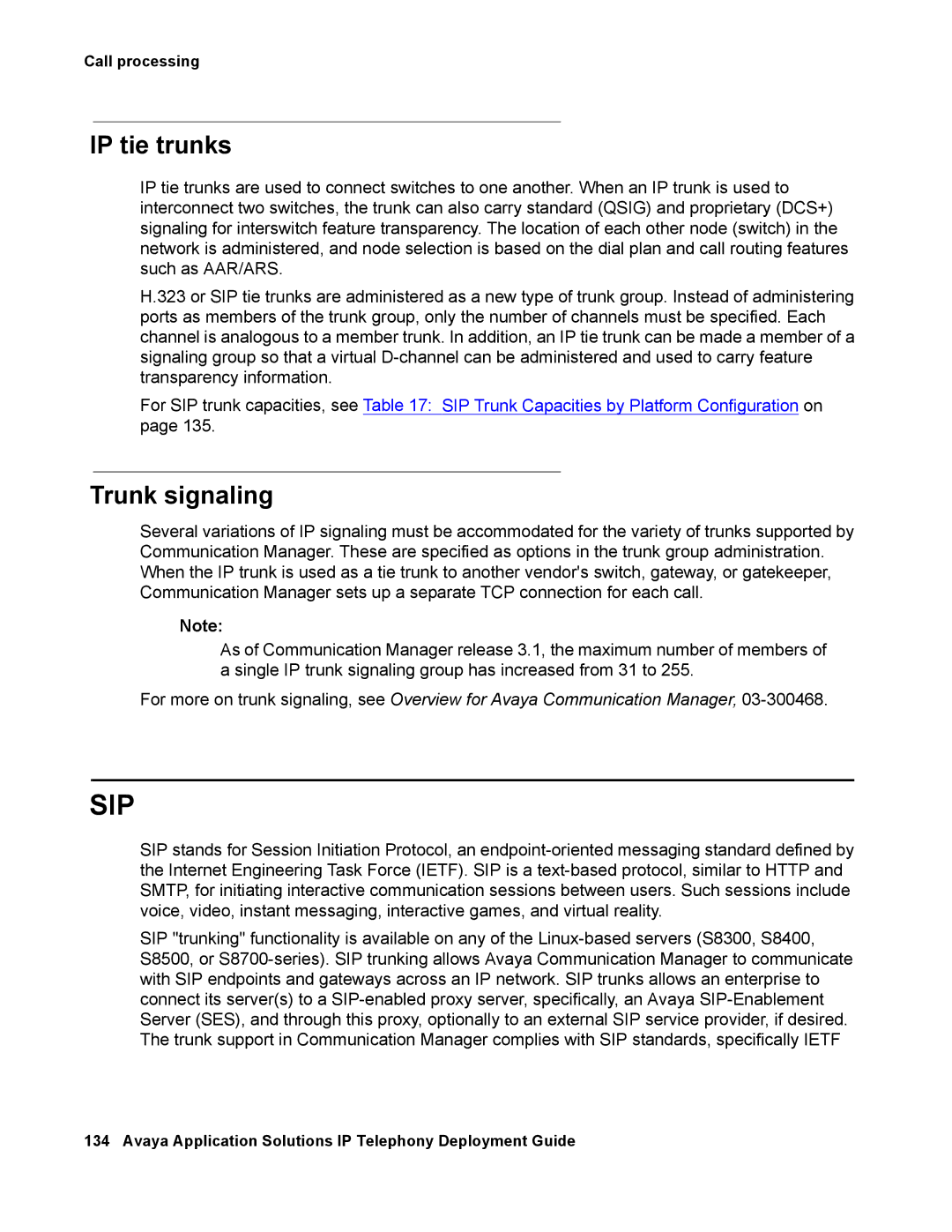
Call processing
IP tie trunks
IP tie trunks are used to connect switches to one another. When an IP trunk is used to interconnect two switches, the trunk can also carry standard (QSIG) and proprietary (DCS+) signaling for interswitch feature transparency. The location of each other node (switch) in the network is administered, and node selection is based on the dial plan and call routing features such as AAR/ARS.
H.323 or SIP tie trunks are administered as a new type of trunk group. Instead of administering ports as members of the trunk group, only the number of channels must be specified. Each channel is analogous to a member trunk. In addition, an IP tie trunk can be made a member of a signaling group so that a virtual
For SIP trunk capacities, see Table 17: SIP Trunk Capacities by Platform Configuration on page 135.
Trunk signaling
Several variations of IP signaling must be accommodated for the variety of trunks supported by Communication Manager. These are specified as options in the trunk group administration. When the IP trunk is used as a tie trunk to another vendor's switch, gateway, or gatekeeper, Communication Manager sets up a separate TCP connection for each call.
Note:
As of Communication Manager release 3.1, the maximum number of members of a single IP trunk signaling group has increased from 31 to 255.
For more on trunk signaling, see Overview for Avaya Communication Manager,
SIP
SIP stands for Session Initiation Protocol, an
SIP "trunking" functionality is available on any of the
